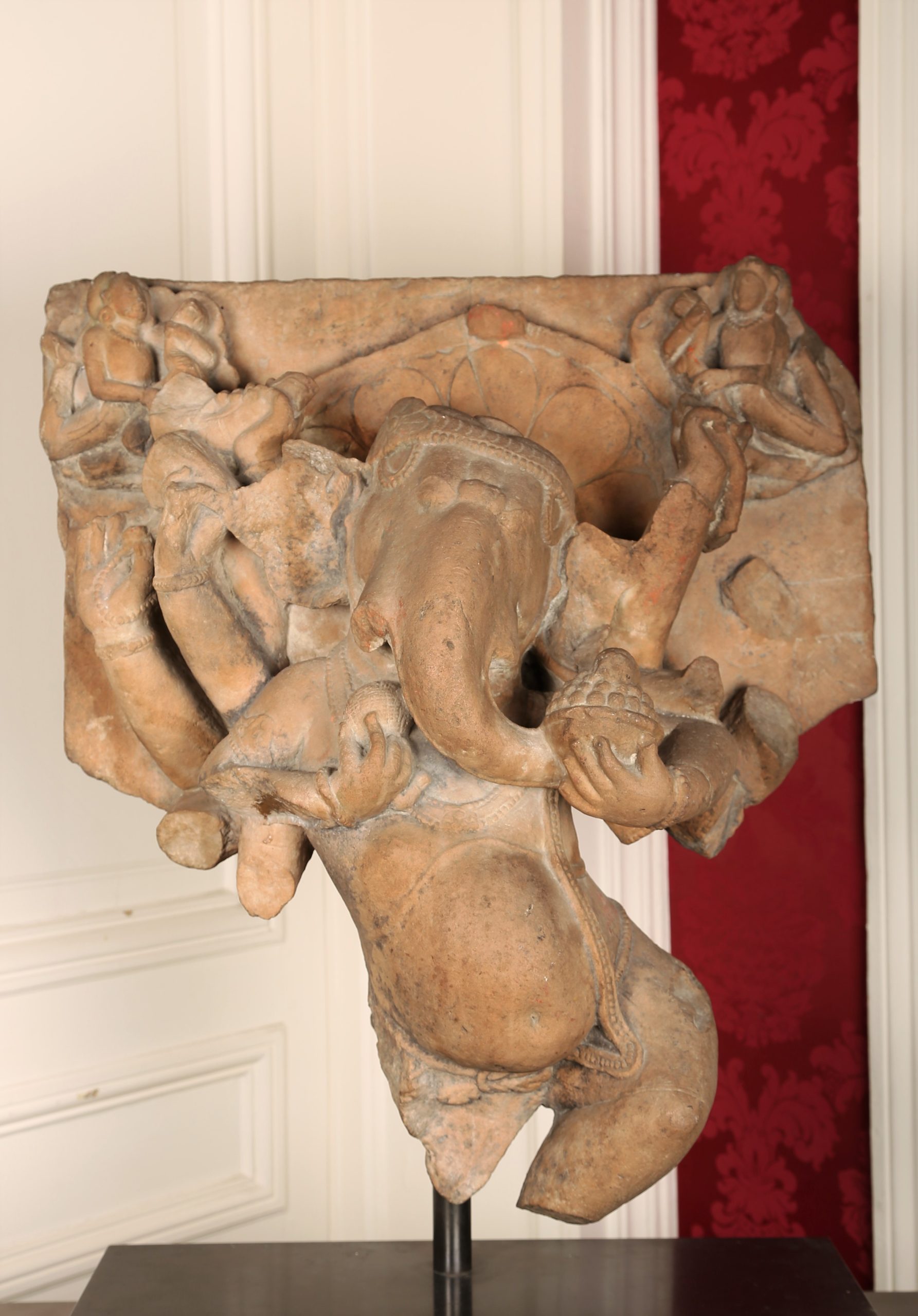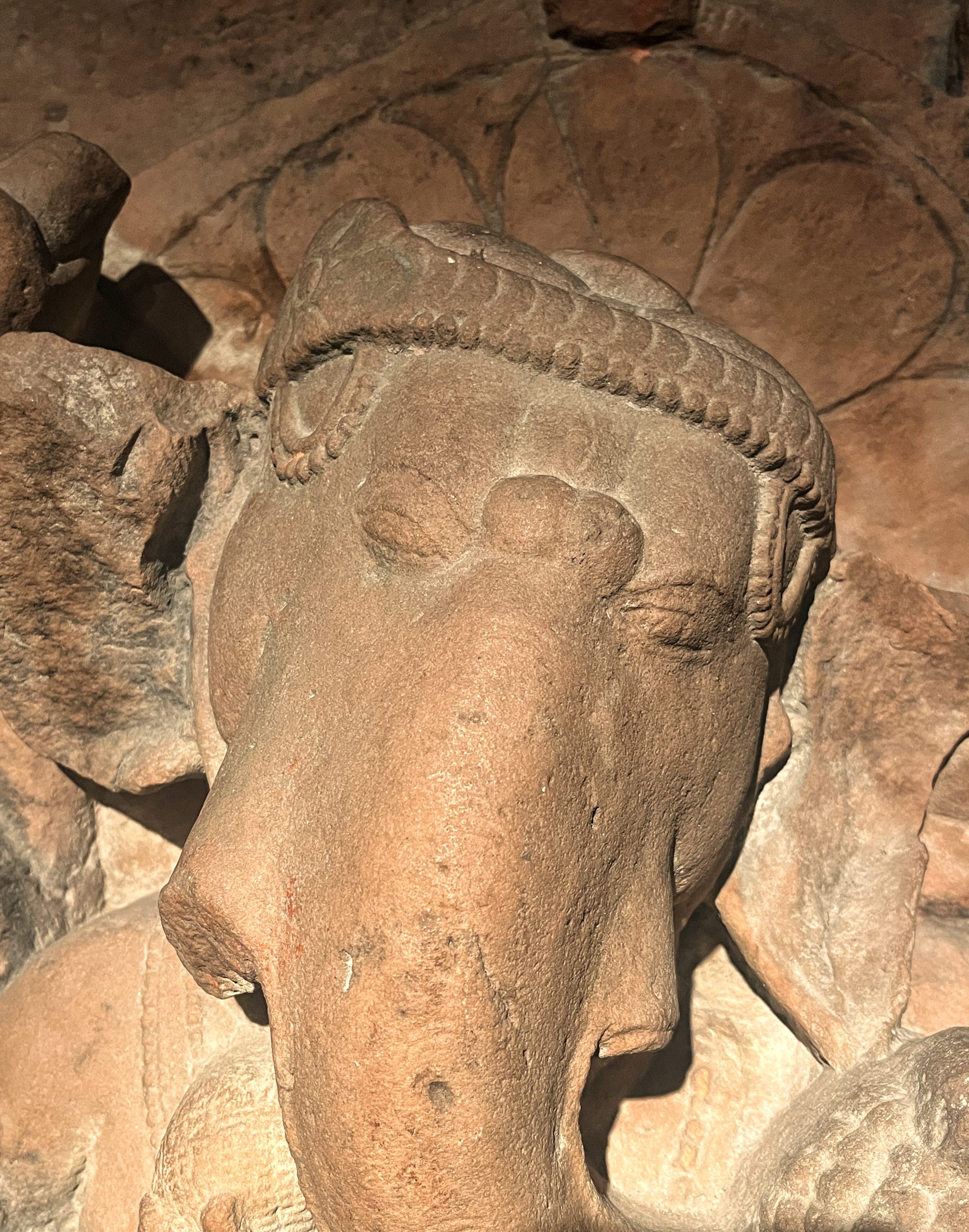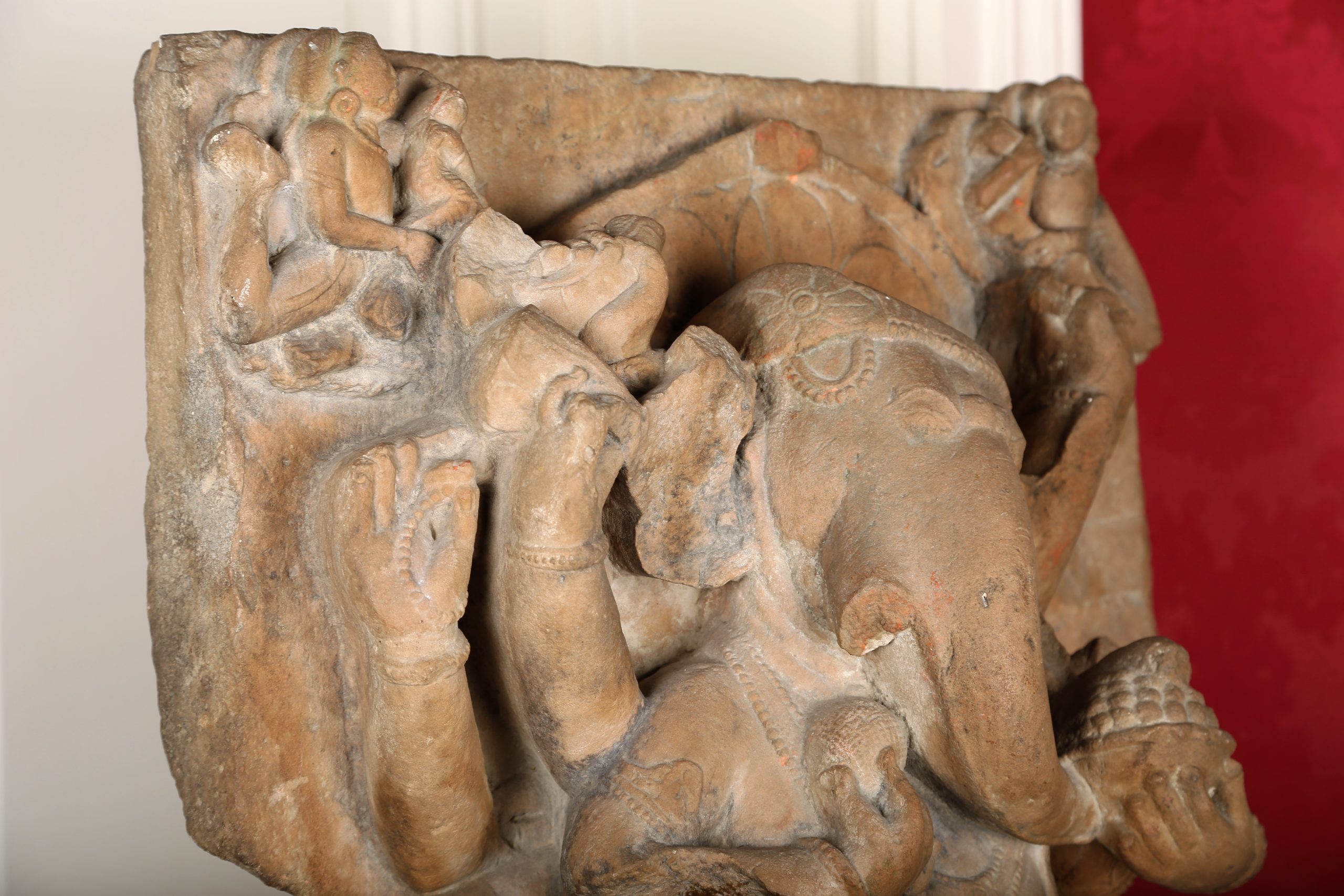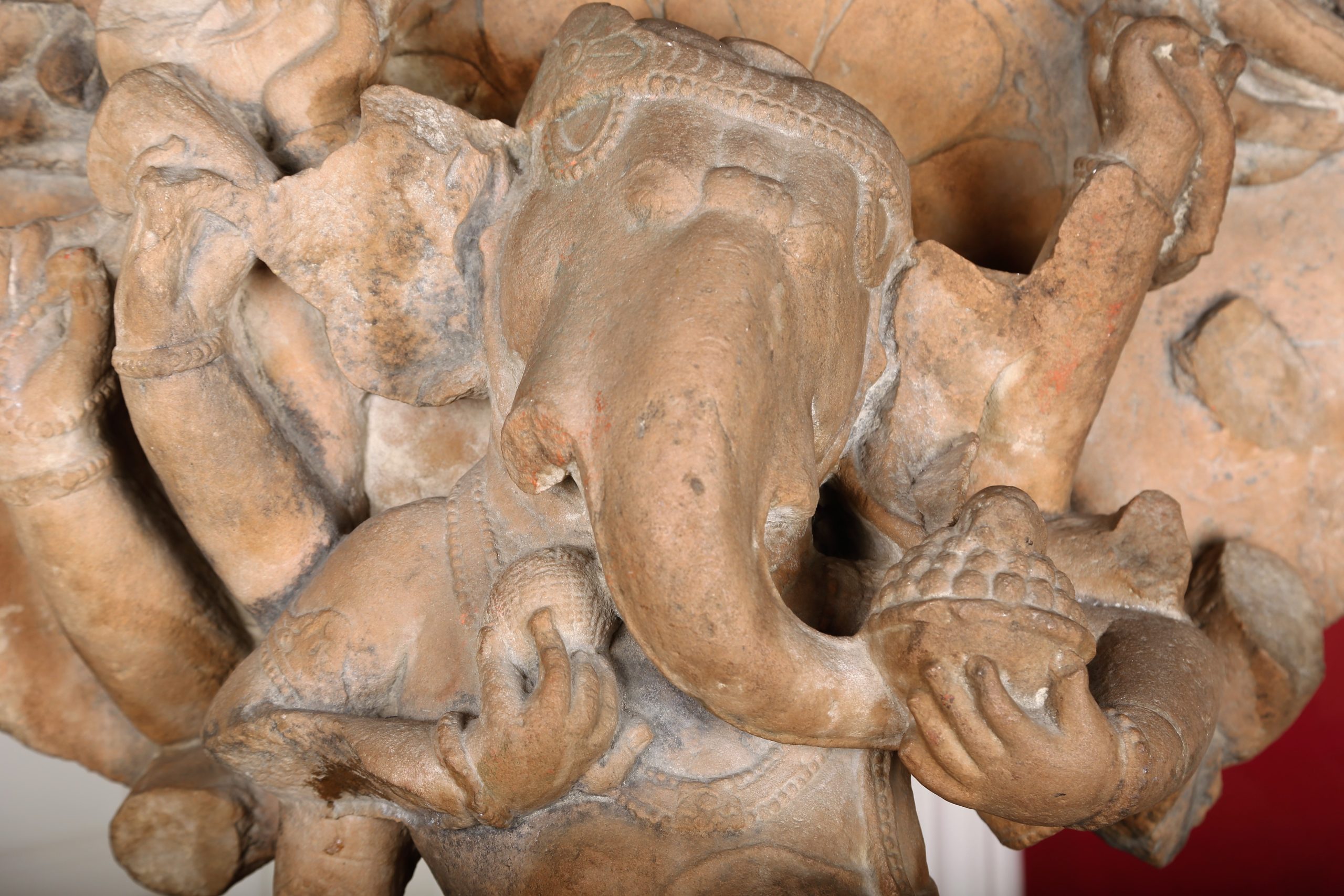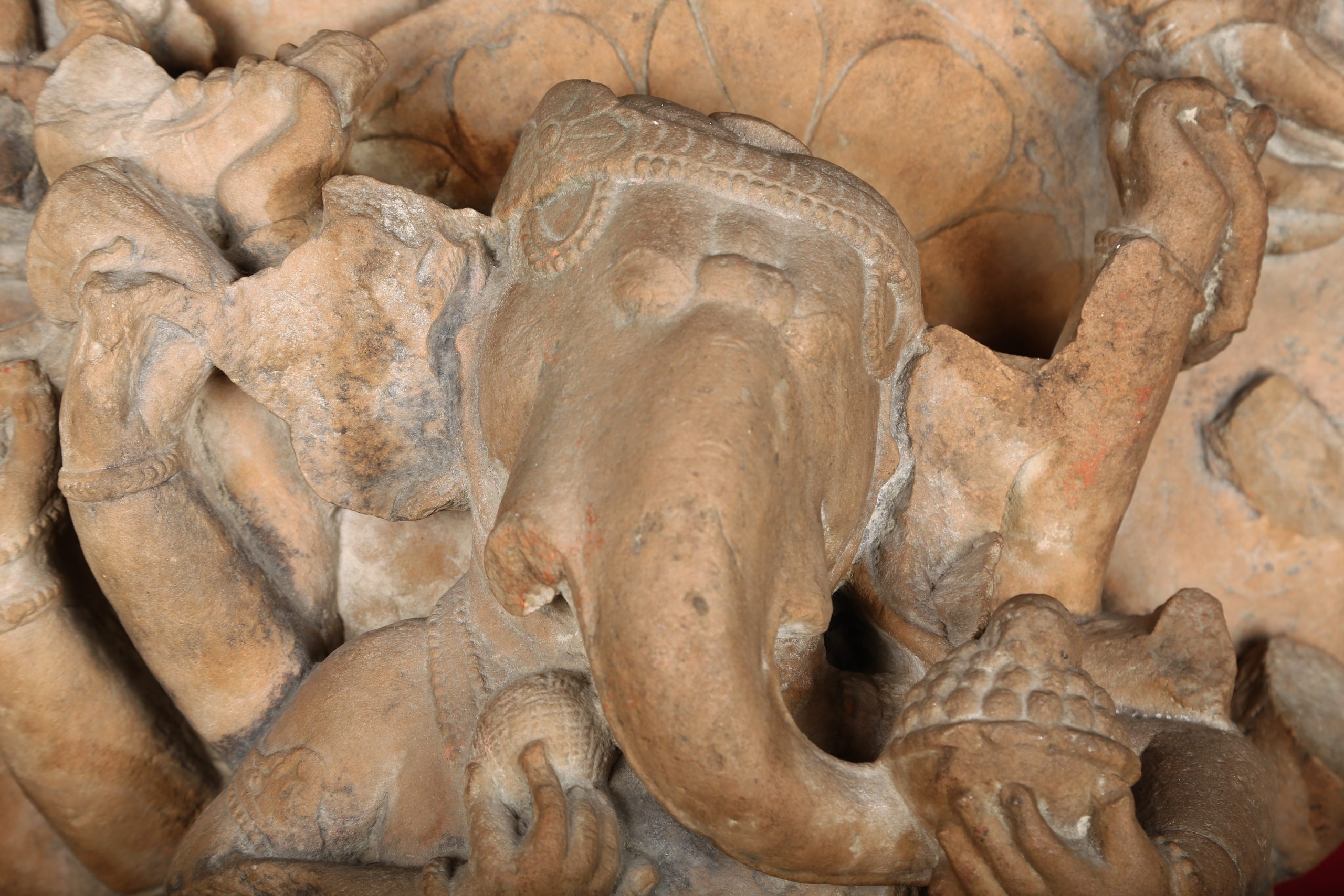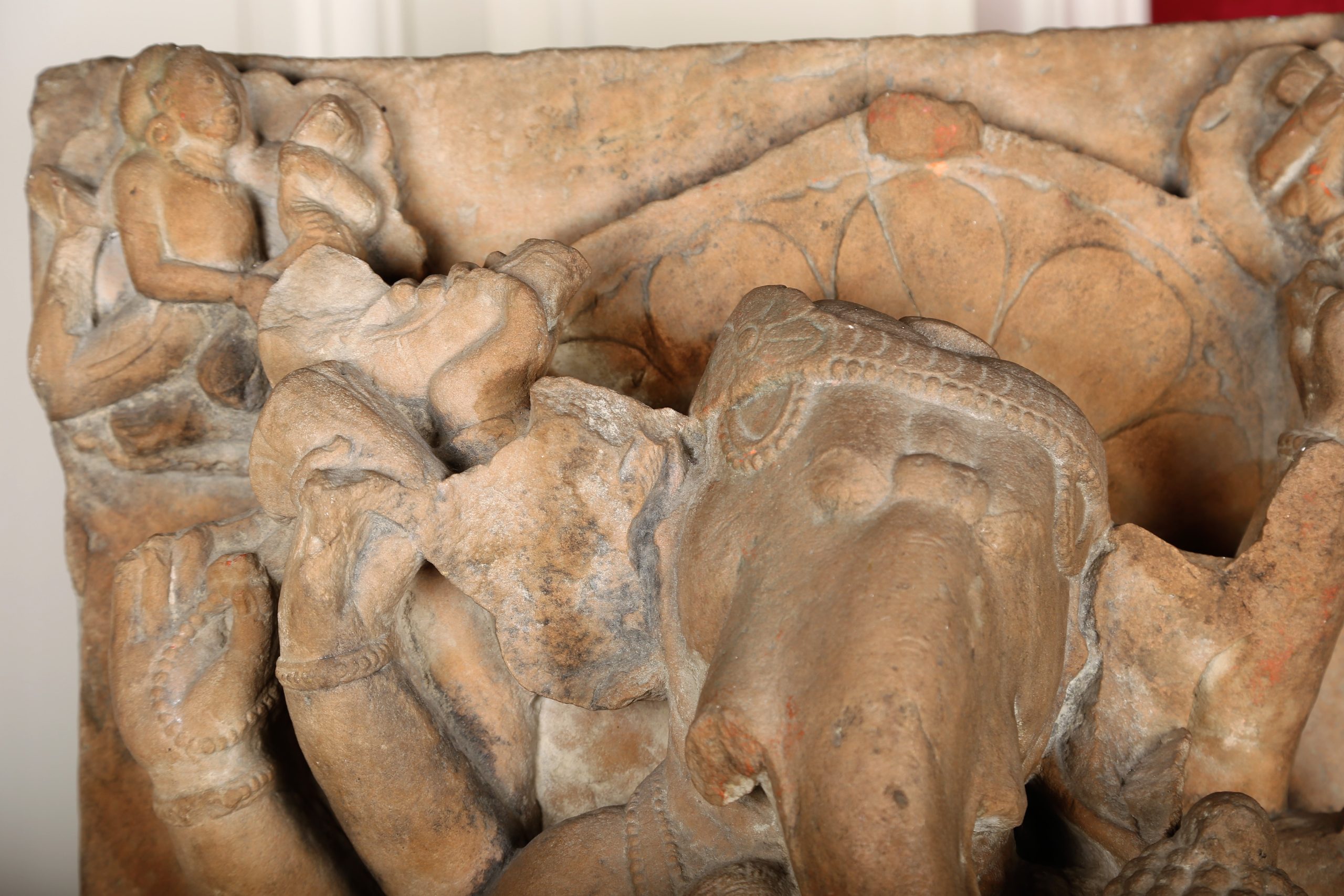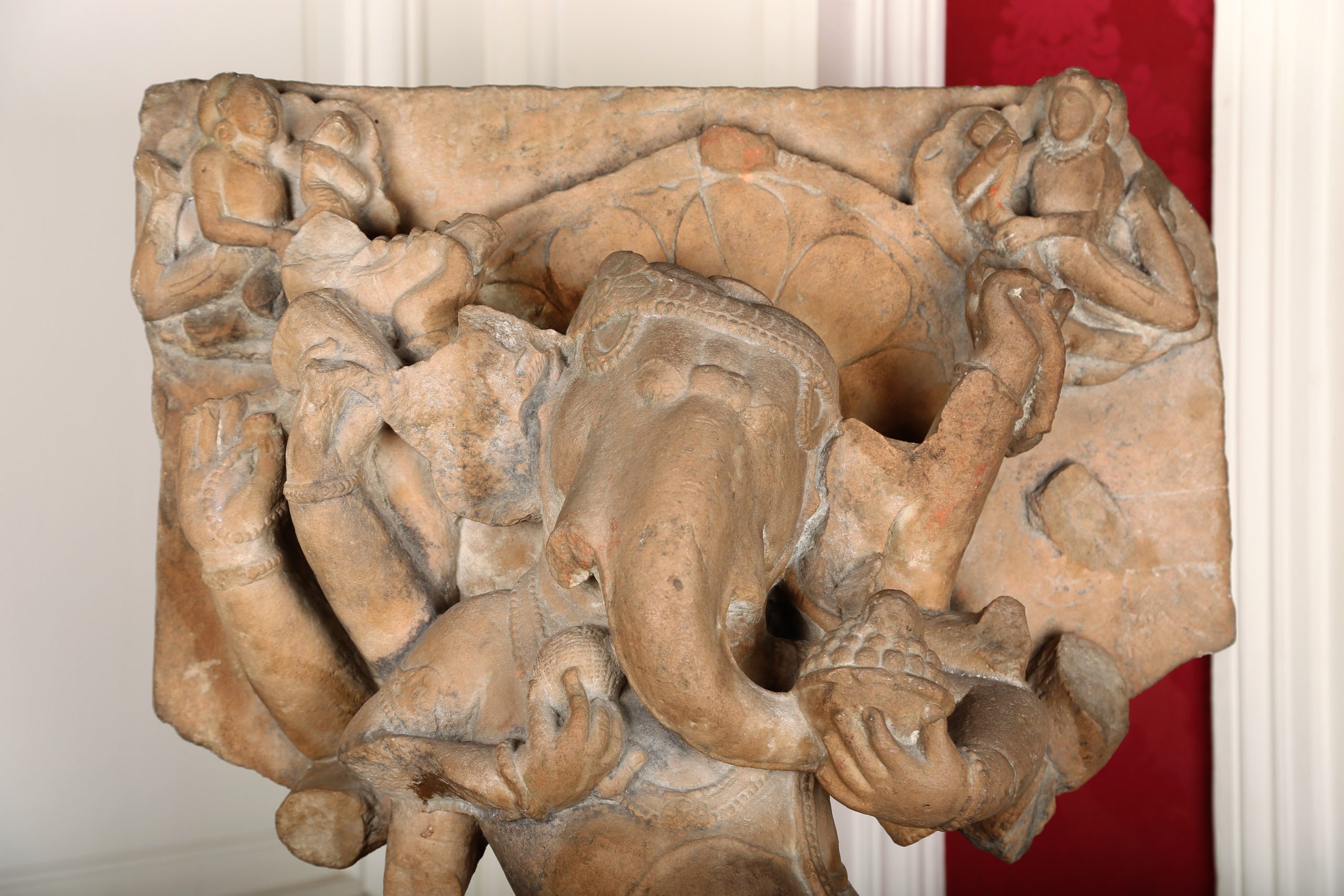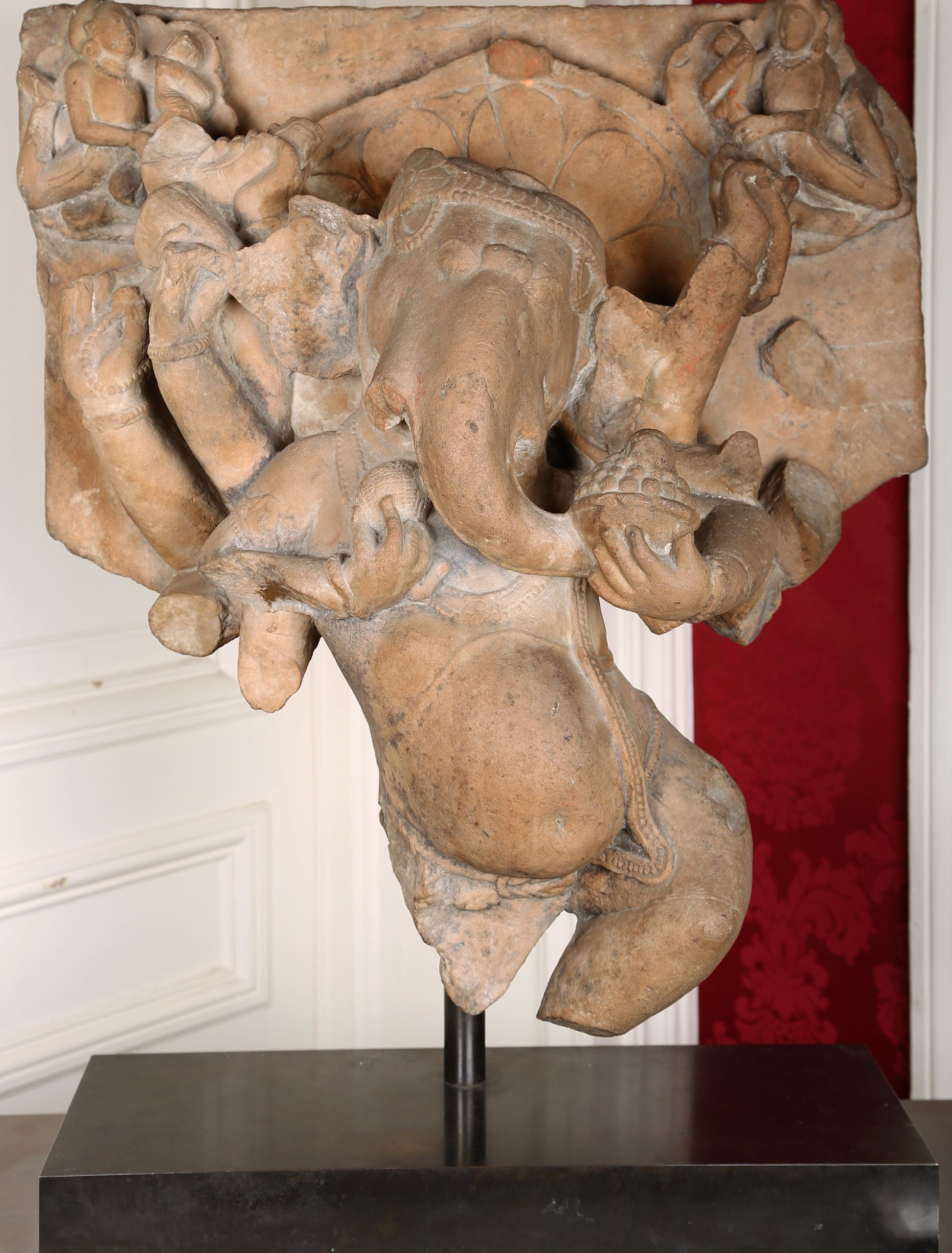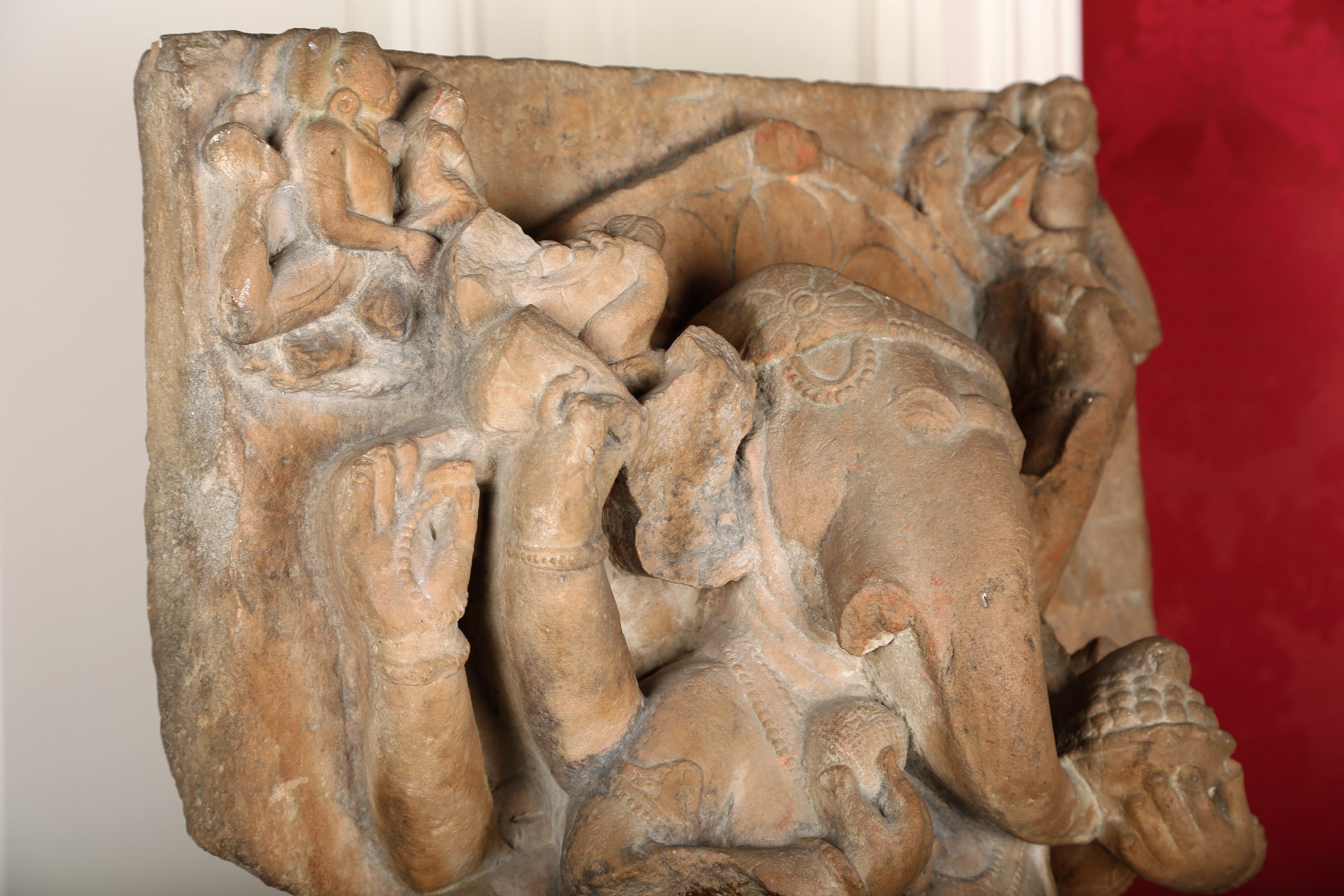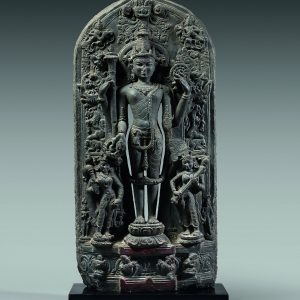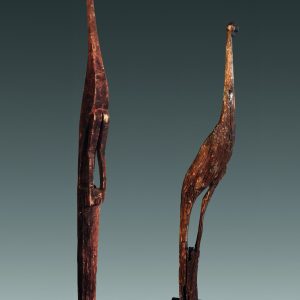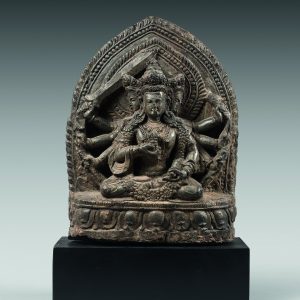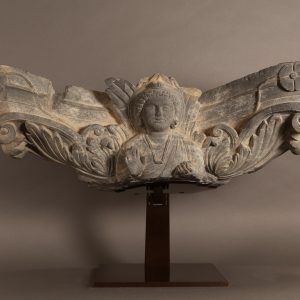Ganesa
Sandstone
Northern India
10th-11th century
H. 65cm
Description
This beautiful work, sculpted in high relief on its upper part, represents the Hindu god Ganesh. He is recognisable here by his elephant head and humanised body, as well as his jewellery. He is shown standing in a tribhanga pose. Surrounded by a halo in the form of a flowery medallion, he presents a dynamic and dancing posture, usual for the god. We can also see six of his hands and arms still intact (out of a possible total of ten arms). Ganesha holds various laksanas (distinctive attributes) in his hands. His lower left hand holds a bowl of Indian laddoos, the god’s favourite delicacy, and his other hands hold a noose, his broken tusk and a mala rosary. Two flying apsaras assisting the deity are carved in the upper corners.
The son of Śiva, this elephant-headed deity is one of the most popular gods in the Hindu pantheon, as evidenced by his many representations throughout the subcontinent.
His animal head intrigues, awkwardly explained by several rather late legends, not earlier than the 7th century. According to the Śiva Purāṇa, the goddess Pārvatī, wife of Śiva, had her flats protected by a guard, Vighneśvara, ‘Lord of Obstacles’, whom she made from dust mixed with a flap of her own flesh.
Śiva, stopped at the entrance to his wife’s room, beheaded the guard. In the face of his wife’s anger, he promised to revive him and provide him with the head of the first being to pass by. This was an elephant whose head was taken. The composite being was immediately proclaimed a child of the divine couple. The assimilation by Hinduism of a pre-Vedic aboriginal cult, encountered by the Brahmins as the religion developed in the centuries before the Christian era, is the most likely hypothesis for the origin of the deity.
Provenance: English private collection (by repute).

